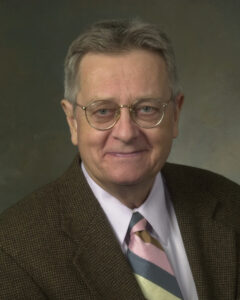
“Global warming wreaks havoc in California.” “Ocean acidification will make climate change worse.” “Miami will soon be underwater.” “2022 warmest year on record.” Each day we are bombarded with scary news stories. What’s true versus what’s exaggerated? What should the average citizen “believe?”
“Climate” is measured in 30-year segments. Conversely, “weather” is described in days, weeks and months.
Anyone knowledgeable in climatology, meteorology, paleontology and geology knows the complexities of the “climate cycles” that have taken place for thousands of years. Exhibiting different periodicities, cycles frequently overlap with, and occur inside, one another. Some recognized of the more than one dozen cycles include:
[1] Milankovitch Cycles — which include Glacial Periods (approximately every ~90,000 to 105,000 years) and Interglacial Periods (~10,000 to 15,000 years); these were discovered in ice core samples from Antarctica and Greenland. We came out of the last Glacial Period ~11,500 years ago (which, e.g., had carved out the Ohio River Basin).
[2] North African Climate Cycles happen every tens-of-thousands of years, due to gravity-induced, slow, and continuous change in orientation of Earth’s rotational axis — divided into stronger (~23,000-year) and weaker (~19,000-year) cycles.
[3] Precession Cycles (every ~26,000 years) are driven by tidal forces effected by the Sun and Moon. Earth is actually not perfectly spherical; thus, gravitational pull tugs the axis over time, creating wobble.
[4] North Atlantic climate fluctuations (“Bond events”), perhaps correlated with ~1,800-year Lunar Tidal Cycles, which occur every ~1,500 years (warm and cold peaks occurring each ~750 years). Potential causes include variable solar output and reorganization of atmospheric circulations.
[5] Recorded in many ancient calendars are “Sixty-Year Climate Cycles”; U.S. senior citizens today might recall that the 1930s-40s were even warmer than the 1978-2007 period.
[6] Atlantic Multidecadal Oscillations happen ~50-70 years, believed to be influenced by temperature and salinity (salt) at varying ocean depths.
[7] Pacific Decadal Oscillations (every ~30-40 years); the PDO represents two different average circulation states that the ocean-atmosphere system seems to have a difficult time choosing between. The PDO was believed to have gone from its negative (cooler than usual) to its positive (warmer) phase around 1977, and has just recently returned to its negative phase — meaning we’re in for colder weather again for probably the next 30-40 years, just as the Northern Hemisphere previously experienced (~1947-1977).
[8] Hale Cycles, representing sunspot activity, occur every ~11 years. For unknown reasons, they are sometimes delayed 5-10 years.
[9] El Niño Southern Oscillations (ENSOs; every 2-7 years) are opposite of La Niñas (“cold ENSOs”), typically lasting ~12-18 months but sometimes extending for years; causes are uncertain but likely related to Pacific Ocean underwater volcanic activity.
[10] Quasi-Biennial Oscillations (~30 months) — along with Arctic Oscillations, North Atlantic Oscillations, and North Pacific Oscillations — are each poorly understood but believed to be caused in part by alignment of the Sun, Jupiter, Saturn and Venus.
To make matters more complicated, we have had “mini-summer” and “mini-winter” periods within our current Interglacial Holocene Era: the Minoan Warm Period (more than 3,000 years before the present, YBP); Roman Warm Period (~2,000 YBP); Medieval Warm Period (1200-800 YBP); and our current Modern Warm Period (which began after the Little Ice Age (from 1300 to 1850 AD). Interestingly, civilizations have flourished during “mini-summer” periods, and declined during “mini-winter” periods.
Factors contributing to climate cycles remain mostly obscure but include: solar activity (frequency, strength of sun flares); geothermal vents and underwater volcanoes; cosmic-ray flux; orbital eccentricity, axial tilt and precession of Earth’s orbit (together called Milankovitch Cycles); magnetic effects of other planets; heat distribution between the oceanic and atmospheric systems; and changes in “radiative forcing” (balance between solar radiation energy absorbed by Earth’s surfaces and energy radiated back into space). Earth is closest to the Sun in January and farthest in July, but there’s a vast difference of land-water distribution between the Northern and Southern Hemispheres.
Natural climate cycles can be disrupted by massive volcanic eruptions or meteorite impacts. Virtually all climate change is natural. Human activity has increased CO2 levels, but this has not affected global atmospheric temperatures. About 500 years from now, Earth is predicted to enter into another Glaciation Period lasting at least ~90,000 years (hopefully, human ingenuity can find some way to prevent this from happening).
Because cycles occur within cycles, one can see how naïve it is, for anyone to predict global temperatures with any certainty — even 10 or 20 years from now. That Earth has remained in equilibrium, as far as supporting human life during the past 300,000 years — seems nothing short of miraculous.
Serious climate changes are well documented. The Saharan Desert was once underwater. The earliest Peruvian civilizations (Supe Valley, the Chicama and Rimac Valleys, 4,000-1,800 BC) — preceding the Incan and Aztec empires populated with millions of people — perished, in large part, because of severe droughts, many lasting several hundred years.
In conclusion, returning to our initial question, “What should we believe?” The fact is: the more one looks into the intricacies of Earth’s extraordinarily complex climate system, the more apparent it is, how little we really know. Therefore, it’s best to proceed slowly and carefully — ignoring the subjective hype generated by mainstream media and politicians.
Daniel W. Nebert is professor emeritus in the Departments of: Environmental and Public Health Sciences, University of Cincinnati College of Medicine; and Pediatrics at Cincinnati Children’s Hospital. He now lives in Oregon.
No Comments
Leave a comment Cancel